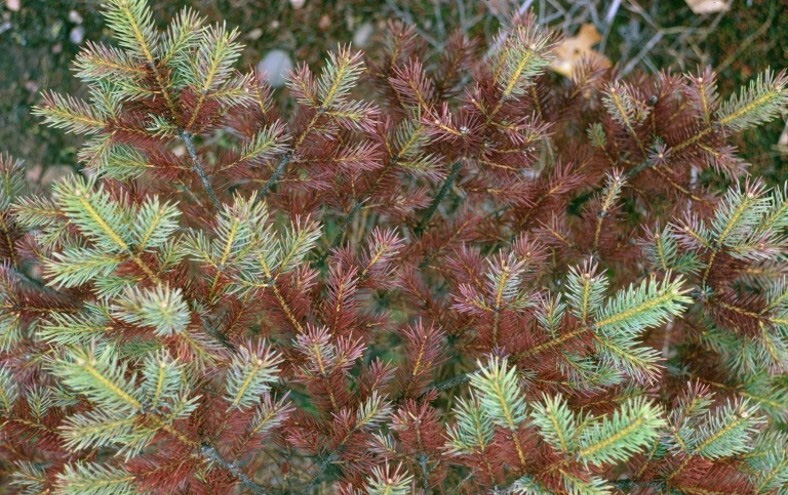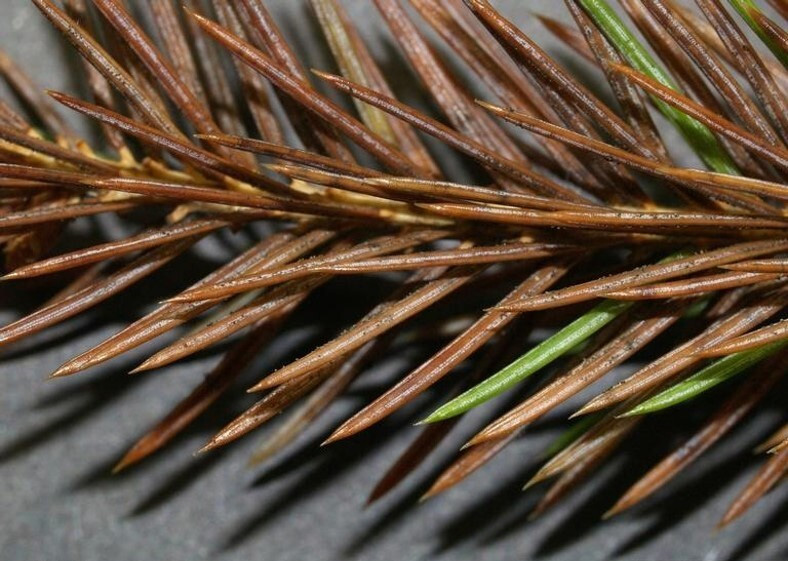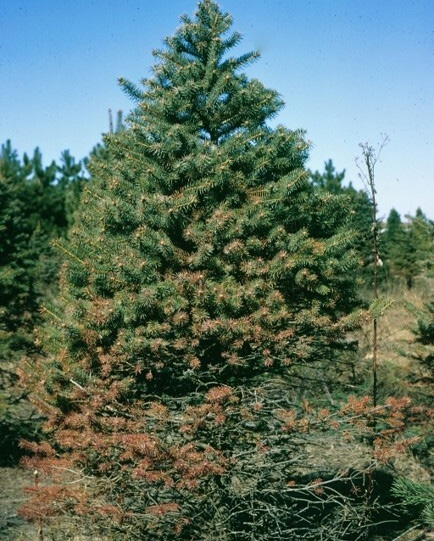Rhizosphaera Needle Cast (Scientific Name of Pathogen: Rhizosphaere kalkhoffi)

Figure 1. Bronze-brown colored older needles. Photo by USDA Forest Service - North Central Research Station, Bugwood.org.
Hosts:
Colorado blue spruce, Engelmann spruce, Douglas fir, true firs (Abies spp.), pines (Pinus spp.), Western hemlock
Damage/symptoms:
In spring or early summer, older, innermost needles turn brown to purple while younger needles at branch tips stay green. Small, black spheres (fruiting bodies) emerge in rows out of stomata of infected needles. Discolored needles fall off in late summer or fall. Symptoms are more severe on lower branches. The branches of affected trees thin over time.

Figure 2. Dark fungal fruiting bodies emerge out
of infected needles. Photo by Bruce Watt, University of Maine, Bugwood.org.
Disease cycle:
The fungus overwinters in infected needles still living on the tree and in needles on the ground. Starting in spring, spores are released throughout the growing season from the black fruiting bodies and distributed to new needles by wind and splashing water. New needles are infected during mild and wet weather. Old needles may be infected due to high pathogen pressure and favorable environmental conditions. Affected needles are dropped approximately 12 months after initial infection.
Management:
Rake up infected needles and prune out and dispose of affected

Figure 3. Spruce tree affected by Rhizosphaera needle cast disease. Photo by USDA Forest Service - North Central Research Station, Bugwood.org.
branches to reduce the disease source. Disinfect pruning tools between cuts with 70% ethyl alcohol or a standard household disinfectant spray. Provide good spacing between trees to optimize air circulation and to shorten wetness of needles. Re-direct sprinklers to avoid hitting the tree canopy during irrigation. Affected trees can be treated with fungicides containing the active ingredient copper or chlorothalonil. These fungicides can only protect new needles, as infected needles can’t be cured. Apply fungicides in spring when new needles have grown half their mature length. A second treatment should be applied 3 to 4 weeks later when new needles are full grown. Strictly follow instructions on the pesticide labels.
By Eva Grimme, MSU Associate Extension Specialist III. February 2024. For more information,
contact diagnostics@montana.edu.
This March 2024 fact sheet is also available as a printable PDF (545KB).
Disclaimer: These recommendations are provided only as a guide. It is always the pesticide applicator’s responsibility, by law, to read and follow all current label directions for the specific pesticide being used. The authors and Montana State University assume no liability resulting from the use of these recommendations. The Montana State University Extension Service is an ADA/EO/AA/Veteran’s Preference Employer and Provider of Educational Outreach.
